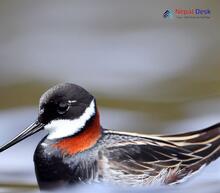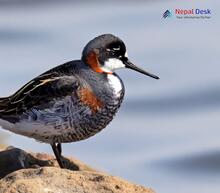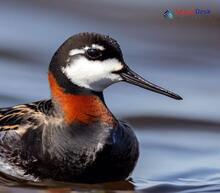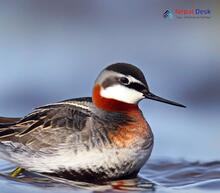Nature is full of incredible creatures that spark our curiosity and make us yearn to learn more about their beginnings and natural surroundings. One such group of fascinating birds is the Phalaropus genus, known for its distinct physical features and mesmerizing behaviors. In this article, let's embark on a journey to uncover the captivating world of the Phalaropus genus, delving into their origins, evolution, classification, physical traits, environmental tendencies, and instances in Nepal.
Tracing their Roots and Evolution
Phalaropes are a part of the Scolopacidae family and share close ties with sandpipers and other shorebirds. They stem from an ancient bloodline of wading birds that goes back millions of years. Over time, through natural selection and adaptation to their habitats, these birds have acquired unique qualities that distinguish them from other family members.
Categorization
Three separate species make up the Phalaropus genus: Red Phalarope (Phalaropus fulicarius), Red-necked Phalarope (Phalaropus lobatus), and Wilson's Phalarope (Phalaropus tricolor). Although often grouped due to their common features, each species boasts distinctive traits that set them apart.
Physical Attributes
Phalaropes boast eye-catching appearances with their slim bodies, extended legs, and narrow beaks - perfectly suited for their unique eating habits. Their most intriguing physical aspect is the reversal of plumage roles between males and females. Female phalaropes exhibit more vibrant hues compared to the subdued colors of males. This rare characteristic among avian species can be linked to the unusual mating system where females compete for male attention instead of the reverse.
Living Environment
These alluring shorebirds can be found in various settings such as wetlands, coastal regions, and inland lakes. Their eating habits are especially fascinating as they are known for spinning in water, creating whirlpools that draw prey closer to the surface. Phalaropes predominantly feed on insects, crustaceans, and tiny fish.
Occurrences in Nepal
Phalaropes' presence in Nepal brings birdwatchers and researchers an exciting chance to witness these captivating birds up close. Although not all three species are spotted in Nepal, Red-necked Phalaropes have been observed during migration in diverse wetland habitats across the nation. Their visitations contribute a unique element to the rich biodiversity within Nepal's boundaries.
The realm of the Phalaropus genus is genuinely enthralling - filled with a mesmerizing evolutionary past, distinctive biology, and captivating behavior patterns. By promoting ongoing research and safeguarding their habitats, we can ensure these remarkable birds continue to flourish and captivate nature enthusiasts worldwide.




